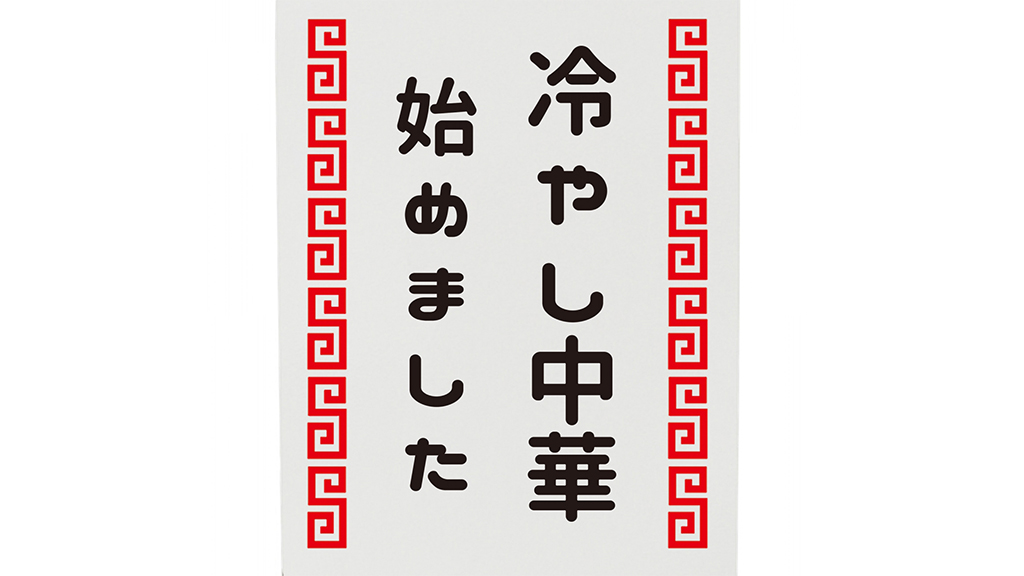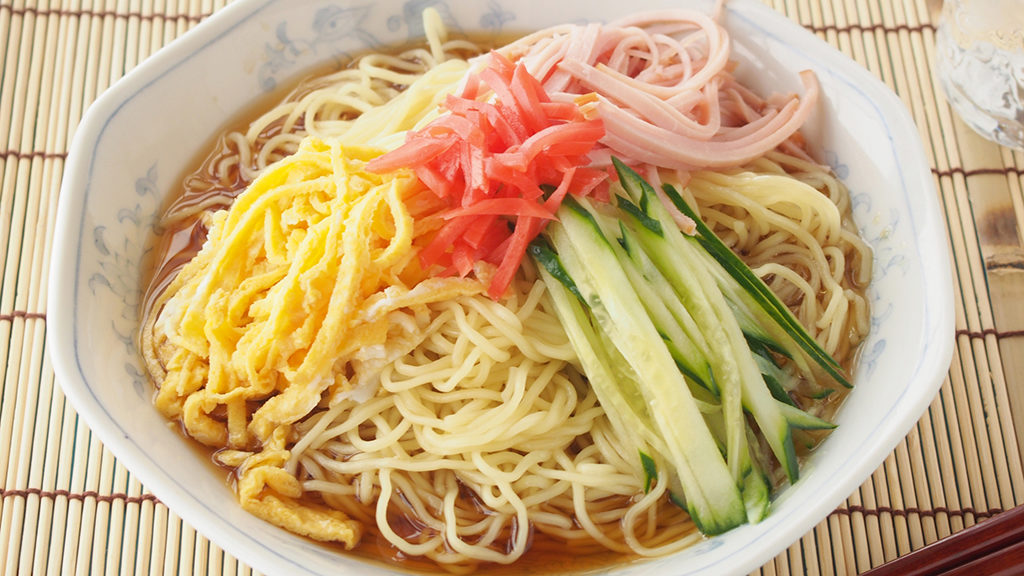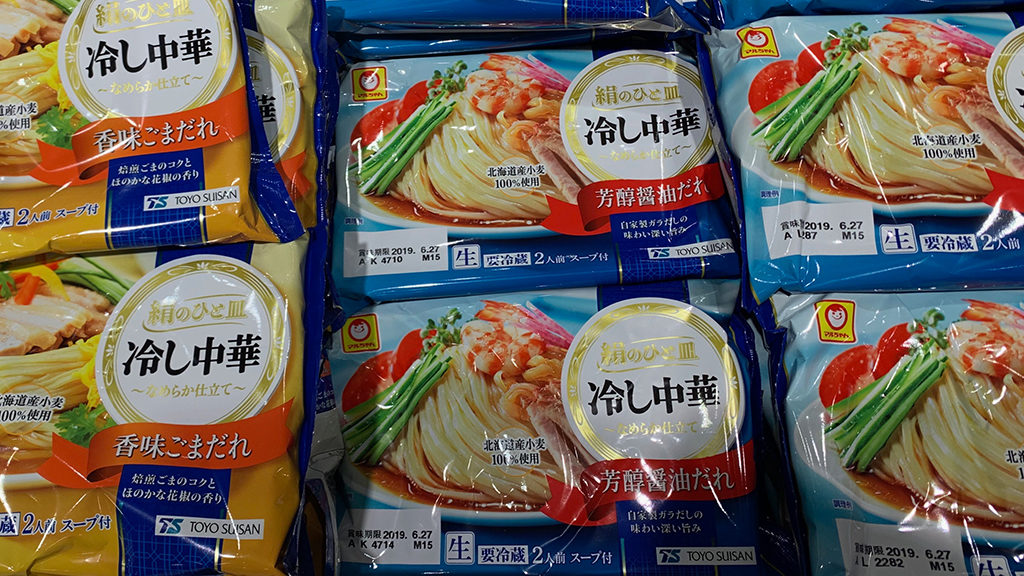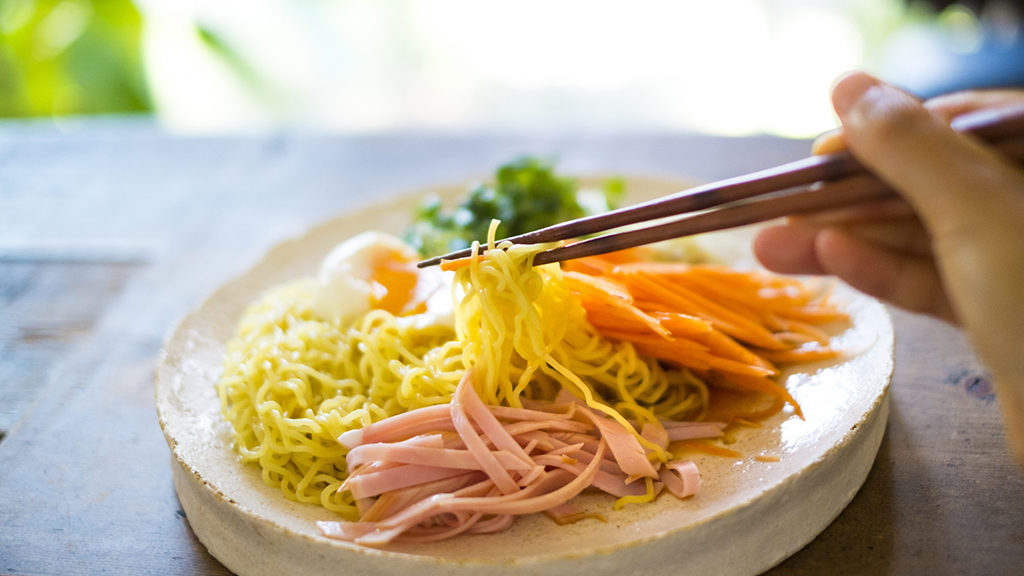Did hiyashichuka originate in Japan?

This post is also available in 日本語
“We have started Hiyashi Chuka”
Every year, as summer approaches, we see such posters in eateries around Japan. Hiyashi-Chuka is a Japanese summer tradition.
Contents
What is Hiyashi-Chuka?

Hiyashi-Chuka is a noodle dish that involves cooling down boiled Chinese noodles, placing topping ingredients on top, and flavoring with sauce or condiments.
Even in the summer, when you are likely to have less of an appetite, these cool, refreshing Chinese noodles can be simply slurped and are very popular.
As it has the word “Chuka”, you may think that this is Chuka-Ryori (Chinese food), but in truth it is a dish that originated in Japan. There may be areas that refer to them as “Reimen” or “Hiyashi-Ramen”. Further, the sauce, topping ingredients and condiments will also differ depending on the restaurant or home in which the dish is made.
Sauce
Typically, the sauce will have a soy sauce or sesame base.
The soy sauce-based version will often blend soy sauce and vinegar to make a refreshing sauce with some acidity. The sesame-based sauce blends kneaded sesame with sugar and vinegar, to make a sweeter, mellow taste.
Recently, there are also spicier sauces such as that used in “Tantanmen”, and sauces with a Japanese-style base.
Topping ingredients
A wide variety of topping ingredients, such as egg, meat, and vegetables are used, but among these there are some classic ingredients.
- Kinshi Tamago
Melted egg is spread thin and cooked in the frying pan, before beginning cut into strips. - Shredded ham
- Shredded cucumber
Other popular ingredients are boiled egg, “Chashu” pork, steamed chicken, tomato, and bean sprouts. Seafood, such as canned tuna, Kanikama (imitation crabmeat), and steamed shrimp, are also very suitable.
It also suits a more acidic sauce and goes well with the noodles. The bright yellow, red, and green colors are popular as they stimulate the appetite.
Condiments
Typical condiments are mustard and red ginger. Typical summer condiments such as myoga (Japanese ginger) green shiso leaf, leek, ginger, and sprouts are also very suitable.
Where can you eat “Hiyashi-Chuka”?

Hiyashi-Chuka is a dish often chosen at lunch time.
Eating out
When summer comes around, it is a popular menu item for ramen shops, Chinese restaurants, family restaurants, coffee shops, and company canteens. It can be eaten at shops displaying posters or banners stating “We have started Hiyashi-Chuka”.
It is both cheap and voluminous, and appears quickly after ordering, so is an ideal lunch even for busy business people.
Lunch box
You can also find Hiyashi-Chuka at the lunch box counter of supermarkets or convenience stores. This includes the toppings, noodles, sauce, and condiments, so you can eat it straight away at offices or homes.
Daily dish
By preparing Chinese noodles, sauce, and your favorite toppings, you can enjoy making home-made Hiyashi-Chuka. It is simple to make. Basically, you cool the Chinese noodles in running water after boiling them, and place the cut topping ingredients on top, and just add the sauce. A wide variety of recipes are published on the Internet, so try making it at home.
“Let’s get through the summer with cold noodles!”

You can eat a wide variety of “cold noodle dishes” in Japan. Cold noodles are not limited to Chinese noodles, and you can also use “Somen”, “Hiyamugi”, “Udon”, “Soba”, and cold pasta.
These can be slurped up easily even in summer when you tend to have less appetite and can be eaten with a wide variety of toppings and condiments to provide nutritional balance. It also has the advantage that you can make it quickly.
Let’s go through the hot summer in Japan by enjoying cold noodles.
Products and Services for Reference



- What are “Wagara (traditional Japanese patterns)”? Meaning and Prayers Accompanying the Main Japanese Patterns
- Types of Sushi and Its History
- Easily Explained. What is “Furusato Nozei”?
- Katakana words, what do they mean? “Icons, remote controls, computers…”
- [2021 | Tokyo] Four Japanese language schools recommended









